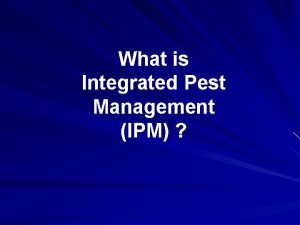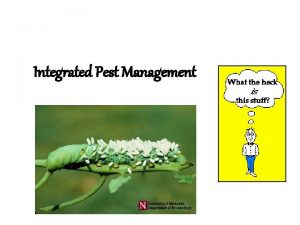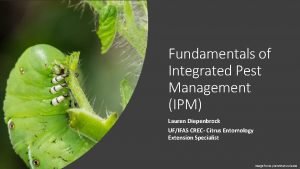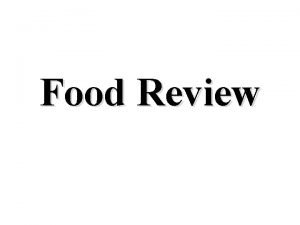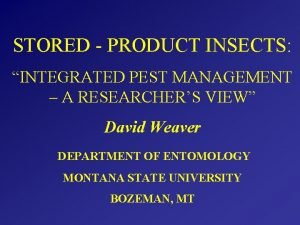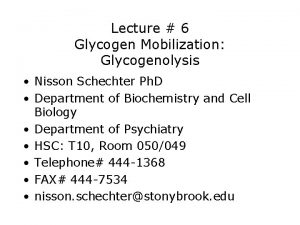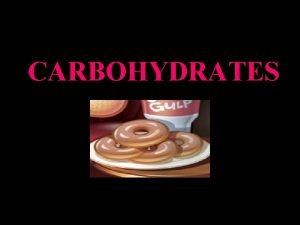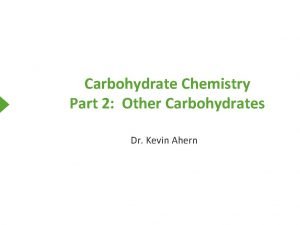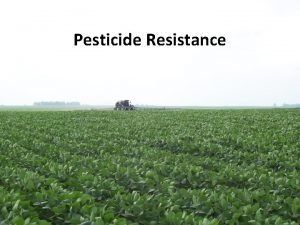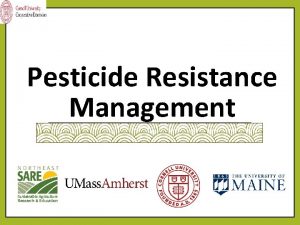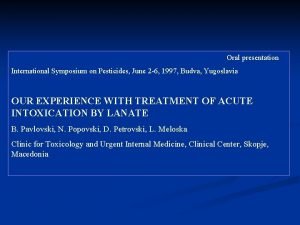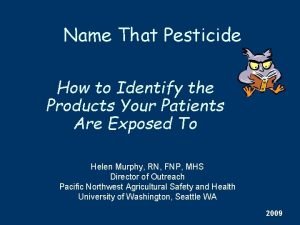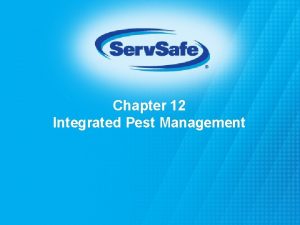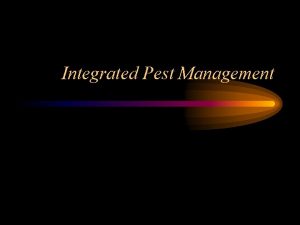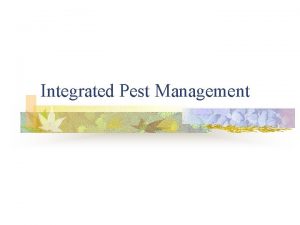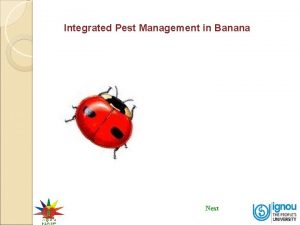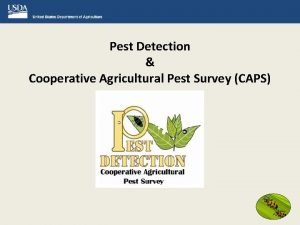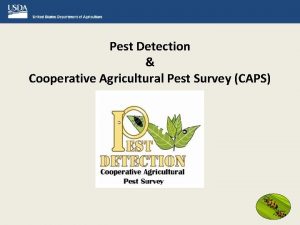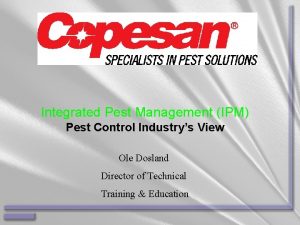Integrated Pest Management Reducing Pesticide Use Integrated Pest












- Slides: 12

Integrated Pest Management Reducing Pesticide Use

Integrated Pest Management (IPM) u an effective & environmentally sensitive approach to pest management u relies on a combination of commonsense practices u may include the judicious use of pesticides. Risk Benefits

History of IPM u Humans formed villages & started planting food crops. u Pests became a problem attacked them & their crops. u Humans learned pest control - physical & cultural practices u tillage to expose & eliminate soil insects u timing of planting, crop rotation u pruning, dusting with sulfur

History of IPM (cont’d) u Physical & cultural methods refined & used into the late 1800’s u Improved crop protection methods = increased acreage u Equipment became larger & faster = larger acreage u Monoculture replaced diversification

History of IPM (cont’d) u pest problems u Search for more effective pest control measures u The age of chemical research started: u Late 1900’s to 1940’s u Use of physical & cultural controls u Use of pesticides u Pest resistance u pest problems

History of IPM (cont’d) the mid 1940’s: DDT, organochlorines, OP’s & carbamates u Led to almost total dependence on chemicals u 1962: “Silent Spring” by Rachel Carson u Pointed out adverse effects: u health, environment u Late 1960’s to 1970’s: u Develop u 1980’s Sil Sp ent rin g u In more benign crop protection - IPM principles applied to urban sites

IPM u Goal of IPM: control pests, not eradicate entire population u Treatments are not made acc. to a predetermined schedule u Based on results of monitoring u Treatments are chosen & timed to be most effective & least disruptive to natural pest controls

IPM Strategies u. Monitoring & identification va r a l Oak e Mapl ush Roseb rubs -g Lawn

IPM u. Physical u. Habitat controls modification u. Exclusion ucaulking, sealing uputting up screens uair doors

Integrated Pest Management (IPM) u. Mechanical u. Sanitation controls

Integrated Pest Management (IPM) u. Cultural controls, for example- To maintain a healthy lawn: u. Develop healthy soil. u. Choose the right grass type. u. Mow high, often. u. Water deeply. u. Reduce thatch build-up. u. Set realistic goals.

Integrated Pest Management (IPM) u Biological controls - Bt, nematodes, parasitic wasps, beneficial insects u Least hazardous pesticides used only when absolutely necessary. For example: u Baits - gel, tamper-proof containers
 Integrated pest management objectives
Integrated pest management objectives Integrated pest management
Integrated pest management Ipm
Ipm Integrated pest management ____ than pesticides.
Integrated pest management ____ than pesticides. What is the third step in integrated pest management?
What is the third step in integrated pest management? Bials test
Bials test Glycogenolysis
Glycogenolysis Sucrose fehling's test
Sucrose fehling's test Non reducing sugar vs reducing sugar
Non reducing sugar vs reducing sugar Pesticide resistance
Pesticide resistance Pesticide resistance
Pesticide resistance Lanate pesticide
Lanate pesticide Pesticide classification chart
Pesticide classification chart
